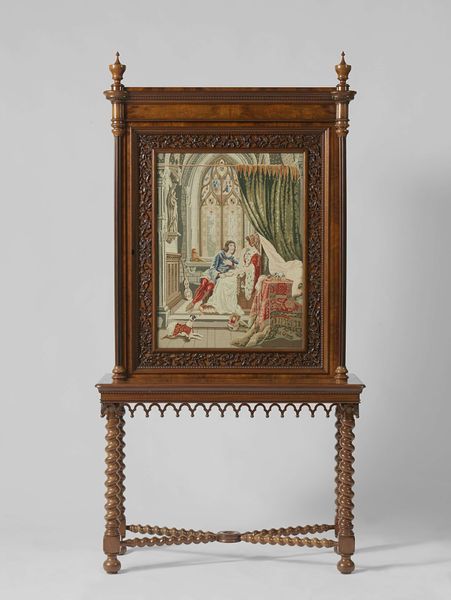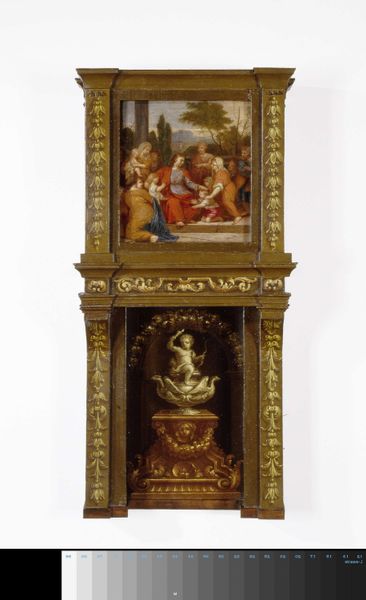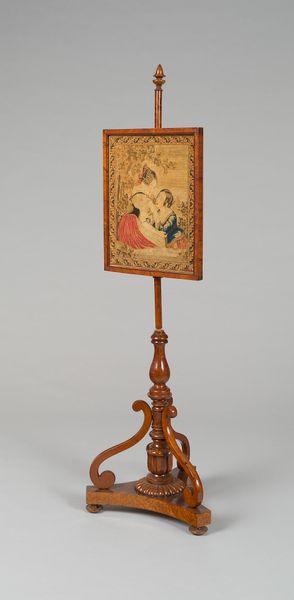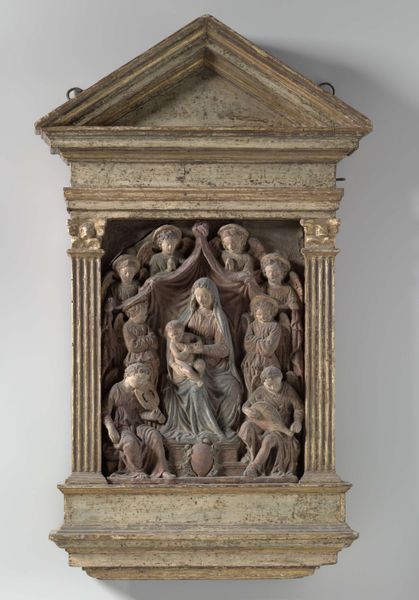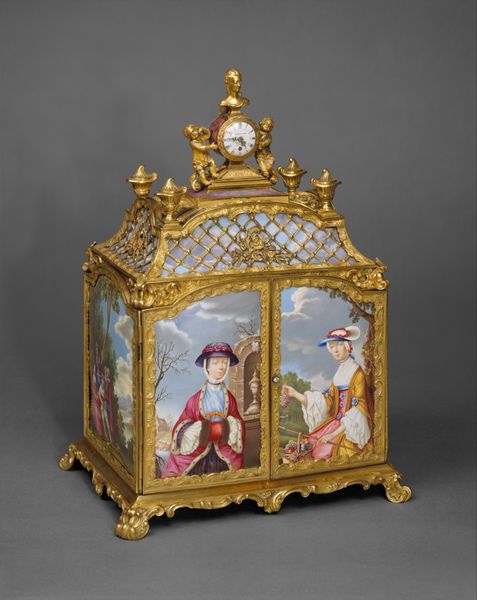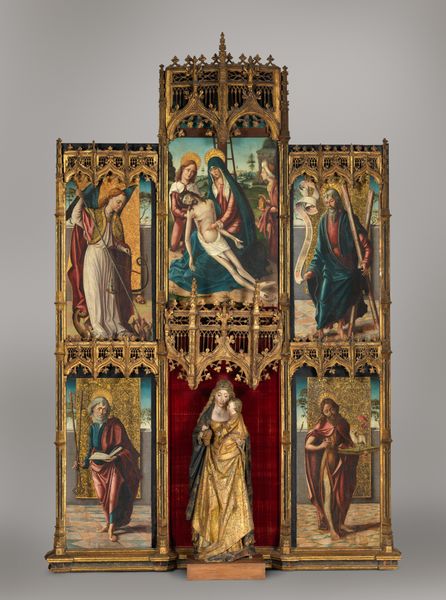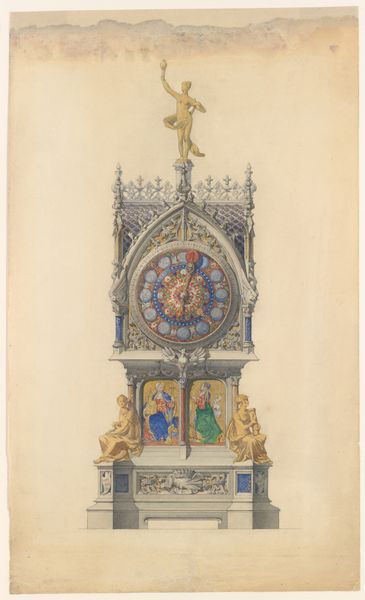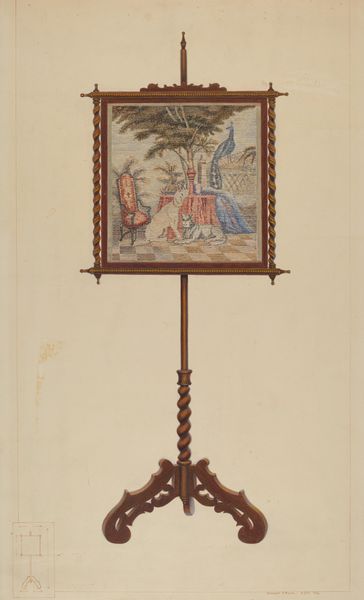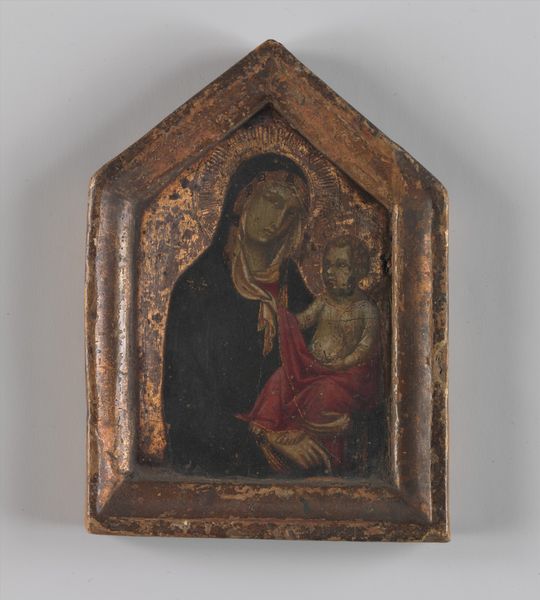
drawing, painting, print, watercolor, wood
#
portrait
#
drawing
#
medieval
#
painting
# print
#
watercolor
#
romanticism
#
men
#
wood
#
watercolour illustration
#
genre-painting
#
history-painting
Dimensions: sheet: 7 3/8 x 4 3/4 in. (18.7 x 12 cm) frame: 15 15/16 x 7 1/16 in. (40.5 x 18 cm)
Copyright: Public Domain
Editor: We're looking at Karl Ballenberger's "Saint Elizabeth of Thuringia Giving Alms," from 1833. It’s currently held at the Metropolitan Museum of Art. It's a small watercolour framed in carved wood. The subject is sweet but almost saccharine. What can you tell me about its deeper meaning? Curator: Consider the imagery presented. St. Elizabeth, hands outstretched, occupies a liminal space between security and exposure, offering alms. What do you think this positioning suggests about the nature of charity in the early 19th century? Editor: It makes her accessible but also vulnerable. Almost theatrical, but also staged, and that feels... romantic. Curator: Indeed! Romanticism loved the medieval. Ballenberger is deliberately evoking that era to explore contemporary social concerns. The choice to depict almsgiving harkens back to a perceived "golden age" of social responsibility, a time, as idealized, when the wealthy took care of the poor as a matter of course. Notice how the architectural framework of the image mimics Gothic arches. Editor: It's like he's using historical symbols to comment on the present? Curator: Precisely! The artist relies on potent visual and cultural symbols associated with compassion, like Saint Elizabeth herself, to question his own era's commitment to similar ideals, prompting viewers to consider how society has changed. How potent that the choice of watercolour also has its own associated meanings and histories! Editor: So the act of giving alms, presented in a carefully constructed historical setting, carries a message that is really about *then*, but about the responsibility of the wealthy in *our* own time? That is amazing, it carries a moral weight in the display of sympathy! Thank you! Curator: Indeed. By examining art through its symbolic language, we can understand not just what the artist saw, but what they hoped the world could become.
Comments
No comments
Be the first to comment and join the conversation on the ultimate creative platform.
